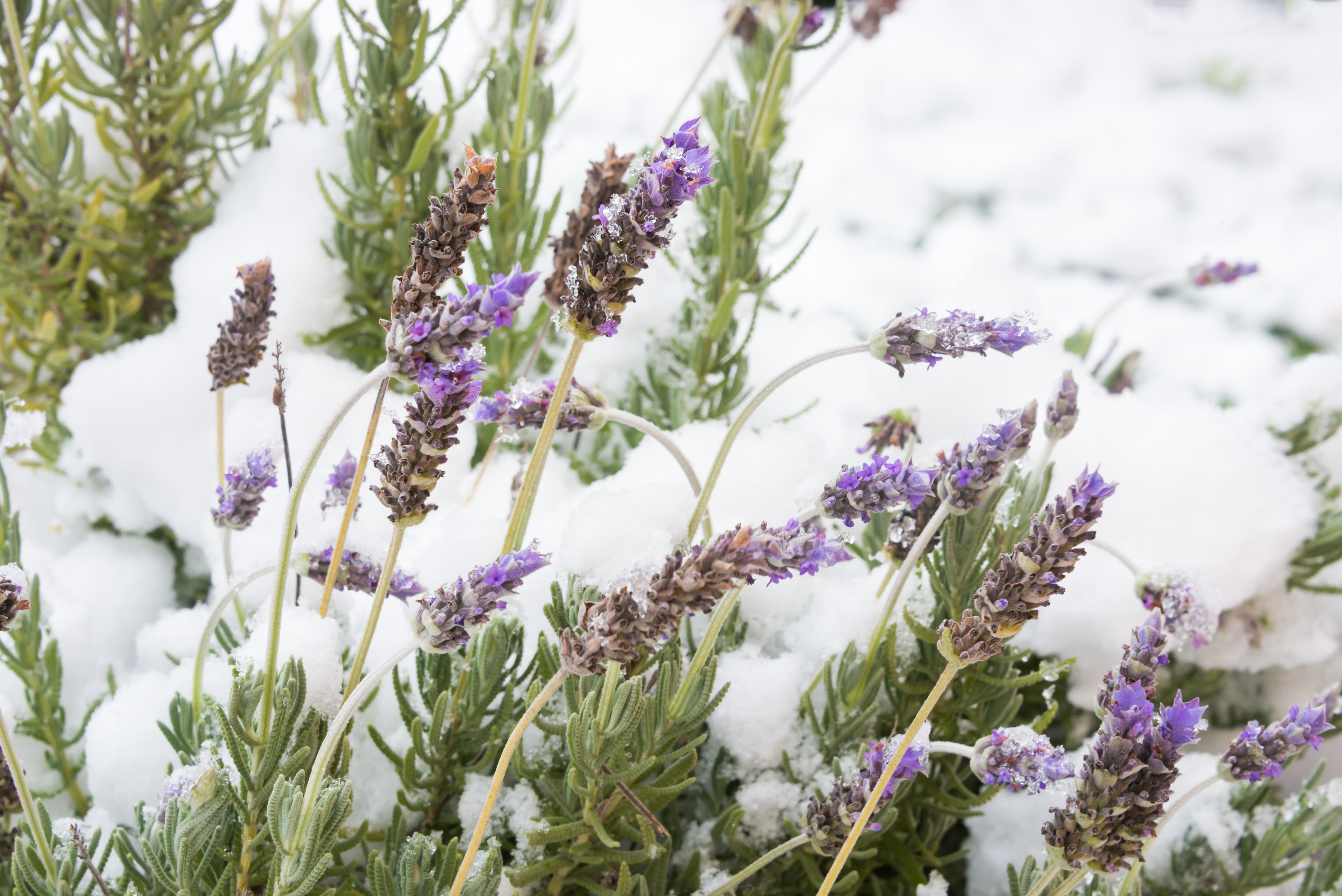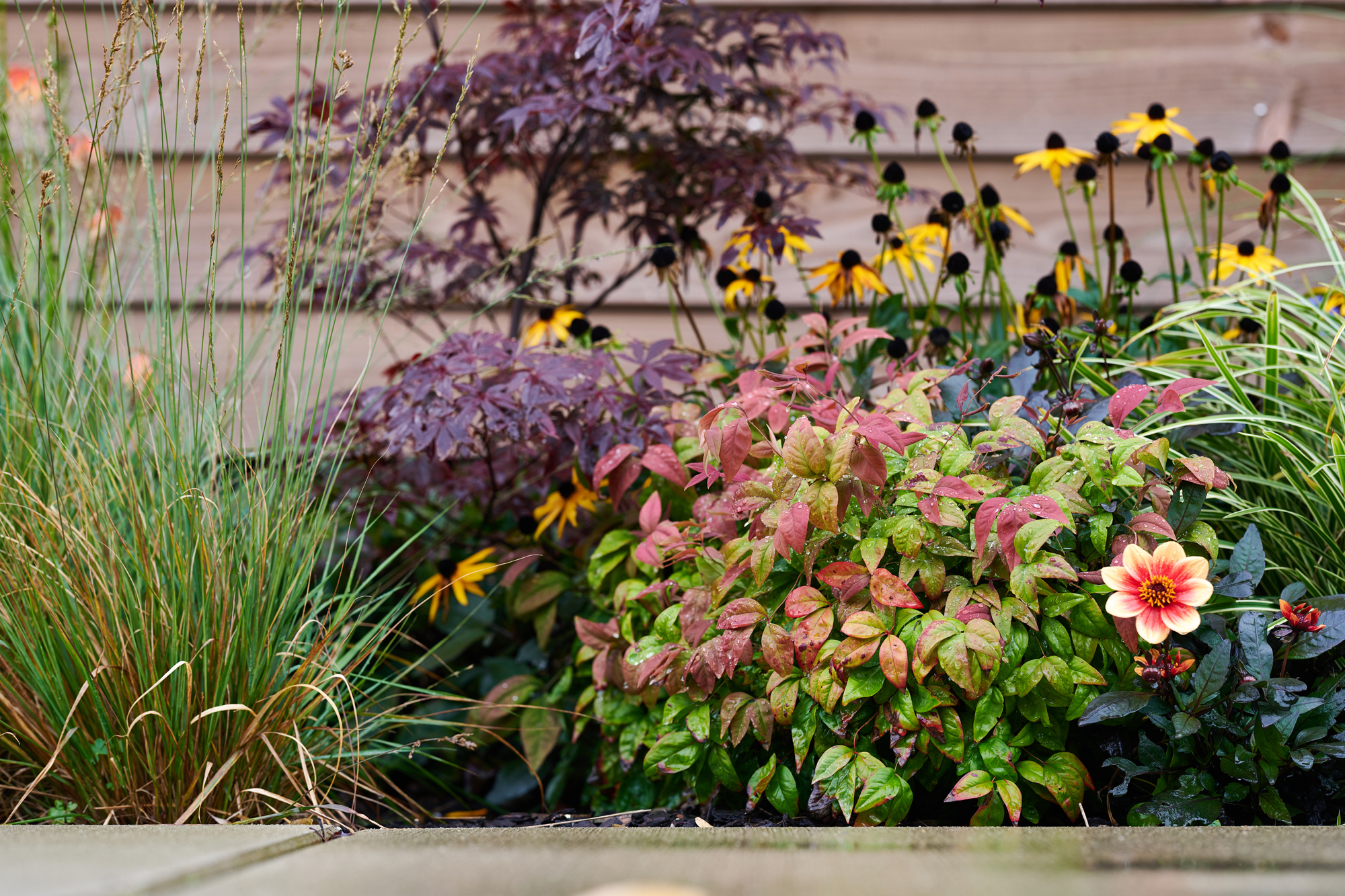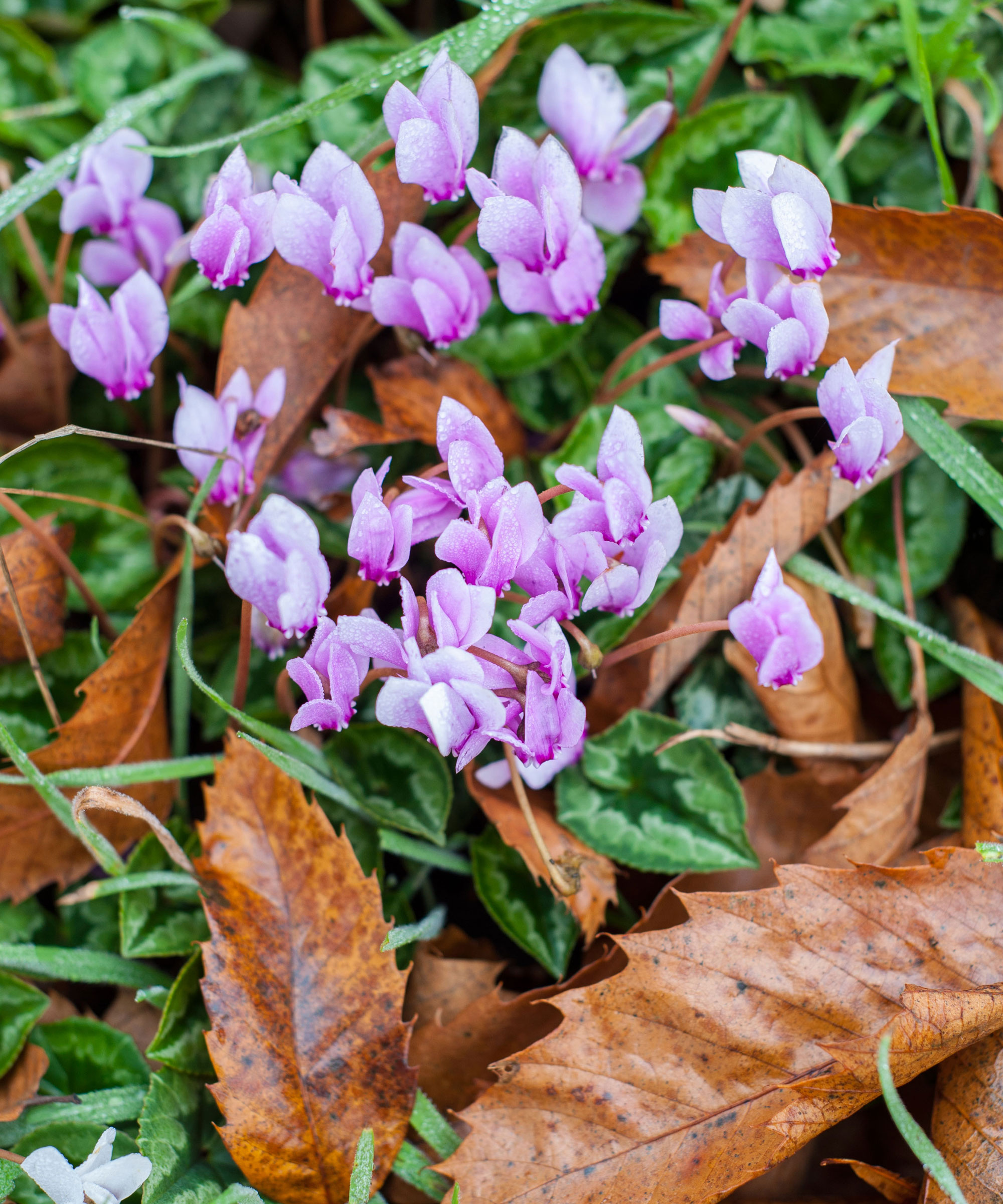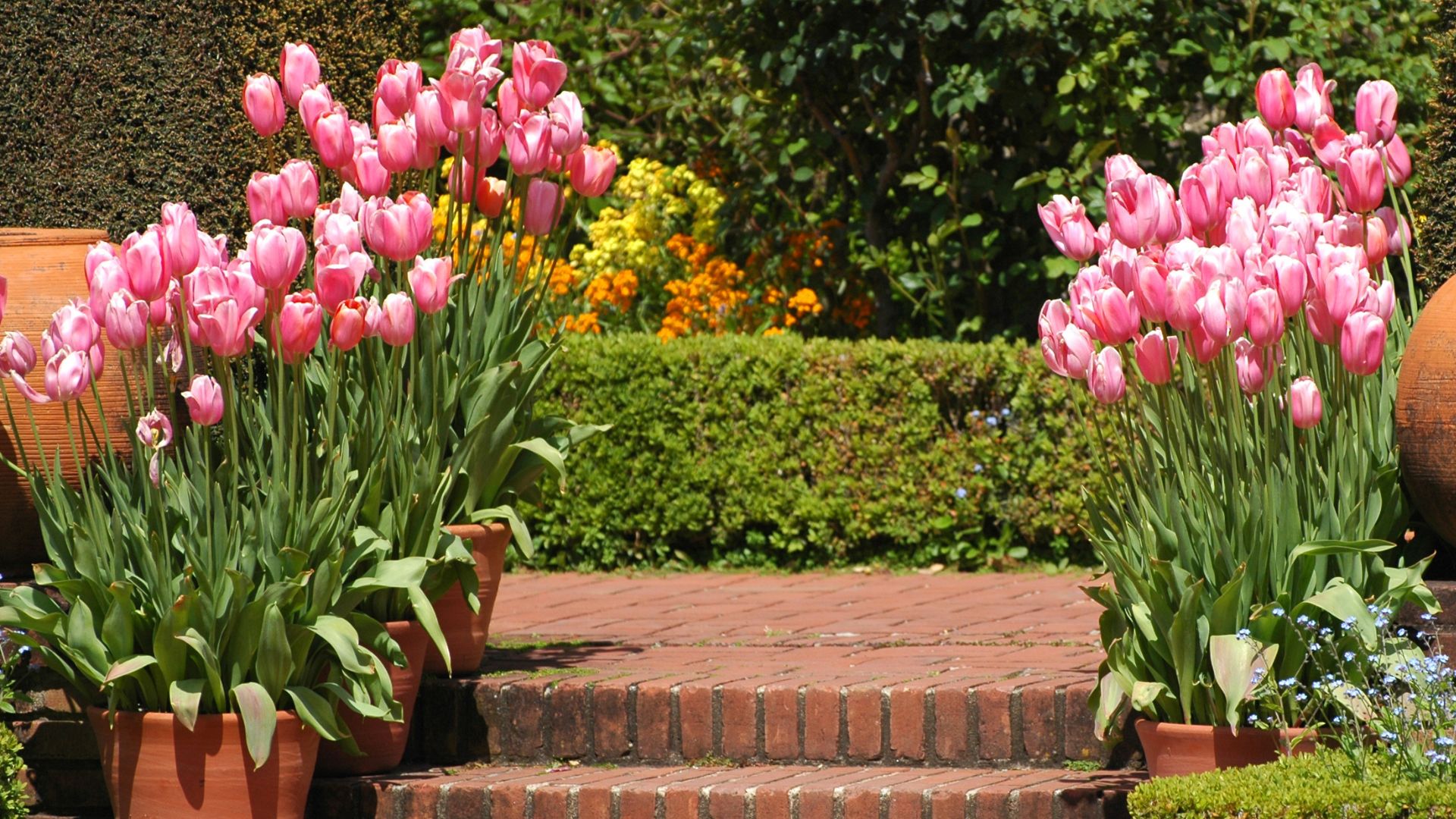
The nights are drawing in, the temperatures are cooling, and your yard can wait until spring, right? Wrong! According to the experts, there are two crucial seasons in a gardener’s calendar: spring and fall. A true fall gardening mistake is failing to put in the work during this transitional period and missing the opportunity to cultivate a crop of plants or flowers that thrive year-round.
The best fall gardening ideas bring one last shot of color to your balcony or yard and, oftentimes, a fair share of mistakes. The result: an outdoor living area that looks like it's seen better days.
But what mistakes do gardeners commonly make in the fall? And should you prune every shrub this time of year? Gardening has many rules to follow to ensure you get the best results. Here are a few you may be breaking and what you'll need to do to fix them.
1. Not Protecting Perennials From Frosts

One minute, you’re enjoying the sunshine with a drink outside, the next, a surprise cold snap comes through your city and wipes out your tender perennials before you've had a chance to protect them – we’ve all been there! This is why it's important to know how to winterize lavender and much-loved blooms.
Fall is notorious for its unpredictable weather, and getting caught by surprise frosts is one of the most common gardening mistakes at this time of year. To counter this, landscape designers Mark Peterson and Keith Wallock at M.ERBS have shared their top tips on how the pros handle tender plants in fall.
"It’s a great idea to protect tender annuals and tropical plants from an early frost in the fall. Protecting them from even one night of frost can extend the plants’ display weeks further into the fall," says Mark.
"The easiest way to protect tender plants this fall is to cover them for the night with a frost protection material." A horticultural fleece (like this GonLei Plant Covers Freeze Protection from Amazon) is a super popular choice for this, and it comes in large rolls, meaning you can cover multiple plants or pots at once or even entire beds. However, if you’re on a budget or don’t have time to pop into a garden nursery, Keith has a great hack for protecting tender plants in a pinch — bed sheets!
"There are commercial products available," says Keith, "but in a pinch, you can even use bedsheets!" Simply lay the sheet gently over the beds or pots that you want to protect, making sure no part of the plant is exposed. You can even use old towels, too.
2. Abandoning Your Lawn

Just because your lawn has made it through a scorching summer doesn’t mean it’s time to relax. Similar to planting, fall is the time to put in the work and set your lawn up for success next year. That's the fundamentals of lawn care 101.
According to the experts, the reduced temperatures and increased rainfall in the fall season create the perfect environment for seed germination, meaning now is the time to repair patches and holes before the weather starts to drop. "For our local landscaping areas [New Jersey], fall is a great time to do seeding on lawns, providing the weather is conducive, and there is enough of the season left for the grass seed to take root. This could take the form of spot seeding, topdressing, or aerating and seeding," says Mark.
To get started on your essential fall lawn maintenance, the first step is to give the lawn a good cut with the mower, making sure you cut the grass when it is dry. Next, use a fine garden rake to gather up any fallen leaves (like this SuperFlex 11-Tine Steel Shrub Rake from Target) and scarify the dead grass away from the turf to reveal any holes or bare patches. If your lawn has numerous bare patches it’s probably best to dress the whole lawn with a top dressing before you overseed it, however, if you’ve just got one or two patches that need attention, sprinkling the seed on top of the bare soil will be fine.
Just be sure to watch the weather after sowing, though! If you have a particularly dry spell after scattering the seeds, keep the lawn topped up with the odd watering to make sure the seeds have enough moisture in the soil to germinate. In around four weeks, you should have a luscious lawn ready to withstand the winter weather.
3. Neglecting Soil Health

Soil is an often overlooked component of a backyard. We spend so much time tending to our flower beds, vegetable gardens, and even lawns, without paying adequate attention to the soil they are in. In spring and summer, there is more of an emphasis on soil, however many forget that your soil requires nourishment during fall too. Peter Pettigrew, owner of the Green Suburb blog and expert on sustainable gardening, says soil health is the most important part of fall gardening as it prepares the yard for next spring.
Peter tells us: "Soil needs nourishment even during fall. Gardeners often forget that enriching the soil in fall sets it up for a flourishing spring. Soil is the foundation of everything, so it is important to feed it properly." We'd recommend using Scotts Premium Top Soil, Lawn and Garden Soil Conditioner from Walmart for healthy soil.
4. Pruning Hedges and Trees Too Early

Though giving your yard one last tidy before winter sets in is super tempting, pruning some hedges and trees in early fall and with the wrong pruning tools is a big no-no. According to gardening experts Mark and Keith, "You should limit woody pruning because it can stimulate new growth which can be damaged by the winter." However tempting it is to give your trees and shrubs a quick haircut, doing so could damage next year’s buds.
"For major pruning, it is best to wait until late winter or early spring if it is appropriate for the type of plant. Many plants should be pruned after flowering and not other times of the year. Check a reputable book or website for plant-specific pruning timing," says Mark.
Generally, if you’re looking to limit the size of your shrub, winter pruning is encouraged. Alternatively, if you want to encourage fresh shoots, pruning in spring can often give the best results. But this rule is incredibly dependent on the type of plant. For example, winter pruning an early-flowering clematis like Montana would disastrously remove all next year’s flowers, so it’s always best to check each plant’s pruning requirements before you grab the shears.
5. Not Pruning At All

"Haphazard pruning or ignoring it altogether is one of the biggest mistakes I see during fall," says Peter Pettigrew. Deadheading and pruning our summer blooms is understandably one of the least exciting gardening tasks. However, pruning is one of the best things you can do for your backyard.
"Prune dead and any diseased branches and shape shrubs," he says, "it will promote healthy growth and prevent disease from spreading." Every plant requires slightly different things from pruning. Deadheading hydrangeas is different from roses for example. Be careful to check your plant's needs before taking to the shears.
6. Removing Hydrangea Heads

Want to know when the best time to plant hydrangeas is? Sure, these large lacy-headed flowers look great in their full midsummer bloom, but fall is when they really come into their own. After the summer, hydrangea flowers will start to dry out and transform into beautiful sculptural flowers that Keith thinks add essential texture and interest over the winter. Removing them would be a mistake.
‘"The best reason to leave the fading hydrangea blooms on the plant is for the beauty and interest they provide in the winter landscape," says landscape designer Keith. "The frost gathers and makes the dried flowers sparkle, they provide a place for snow to gather, and covered in ice they are spectacular. They provide some pleasing texture which, in my opinion, is more interesting than bare sticks."
In addition to looking great, leaving hydrangea flower heads on over winter has a practical use too! By leaving the flowers on and not cutting and exposing the stems, you’ll provide the plant with some protection from frosts and ensure next year’s blooms aren’t affected by particularly harsh weather. So whatever you do, keep your secateurs away from these blooms until spring!
7. Throwing Away Fallen Leaves

Keeping on top of falling leaves is undoubtedly a hassle this time of year. Just when you think you’re done, another stiff breeze comes along and you’re back to square one.
But what if we told you these fallen leaves are the secret to a perfect garden mulch? What if there were genius uses for those dead leaves? We’re talking about leaf mold! Sure, the idea of growing and encouraging mold may not seem the most attractive way to spend your weekend, but if done right leaf mold can be a nutrient-bomb for your containers and yard beds. Plus, if you keep up with your supply every fall you'll have a continuous supply to feed your yard.
To make your leaf mold, first gather your fallen yard leaves. Ideally, you’ll want the majority of the compost to be taken up with thinner leaves like oak, beech, or hornbeam which will rot quickly. If you have large amounts of thicker leaves like walnut or sycamore be sure to shred them before adding to your pile. Place the leaves into a bin liner, (this Great Value Medium Trash Drawstring Bags from Walmart will do) sprinkle over some water if the leaves were dry when you gathered them, then simply pierce a few holes in the bag to enable airflow, tie the top loosely, and stack your bags away for a year or two. By that time you’ll have the perfect cost-saving mulch that you can use across all your plants and beds.
8. Missing Planting Opportunities

You might not naturally consider fall a time for planting, but it should be. Another mistake is not taking advantage of the fall planting opportunities—an oversight that has a huge impact well beyond fall.
Fall is the perfect time to add perennials, trees, and shrubs to your space. For example, knowing when to plant tulip bulbs in containers will grant you magnificent blooms come spring, and your garden will be filled with stupendous color and foliage before you know it.
So ensure you make the most of your planting opportunities this season, as you would not want to miss the chance for a luxurious garden next year.
9. Over or Under-watering

Although fall brings rain for most of us, don't make the mistake of underwatering your plants. During the colder months, your plants still require water to survive, which is often overlooked. Although you might have filled your outdoor space with drought-tolerant plants over our extremely dry summer, there is still a need for watering.
Equally, it is a mistake to water as frequently as you would in summer. "Overwatering is a common mistake for even the experienced gardener," says Robert Summers, expert gardener and founder of Root Quencher. "Given the change of weather patterns throughout fall, reduce your watering frequency," he says.
FAQs
Should I add anything to my garden soil in the fall?
Fall is the the perfect time to tend to your soil and if you're wondering how to amend garden soil — there are a few steps you can take.
You can add nutrient-rich compost to your soil to get it back in shape. You can use compost in your vegetable garden, perennial beds or containers, and even on trees.
Adding leaves and cover crops will also benefit your soil during the fall.







